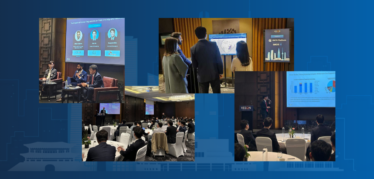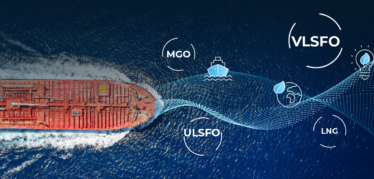As we explored in a previous blog post, integrating workflows and systems is key to data accuracy, business agility, and decision quality that enables an organization to succeed and scale. However, many commercial maritime professionals still rely on legacy or in-house systems with limited to no integration capability.
Poor integration is costing businesses up to half a million dollars every year, with nearly one third of IT decision-makers saying they lack the internal resources to build and manage integrations between systems, applications, and partner ecosystems. Further, no integration capability at all is costing businesses precious time and resources due to information siloes, manual data entry across multiple systems, and even incorrect financial reporting.
So, how can maritime professionals approach integration in an efficient and comprehensive way?
In this blog post, we’ll explore three major tiers of connectivity and how each is essential to achieving operational efficiency and continuity for all maritime stakeholders within your organization.
1. Integration Among Your Internal Workflows
The workflows of key maritime stakeholders on each side of the contract are intertwined at multiple different points along each stage of the voyage lifecycle, meaning the actions of one stakeholder inevitably impact the actions of another. It is for this reason that maritime organizations must ensure one continuous workflow within their commercial maritime solution by integrating the functions of each stakeholder. Within this unified workspace, key stakeholders have constant visibility into the most up-to-date information as changes are made and actions are taken, allowing better decision-making and business agility across the organization.
2. Integration Between Internal Systems Across Your Enterprise
Across your enterprise, there are several different systems that serve critical business functions. From ERPs, to ETRMs, CTRMs, accounting systems, proprietary financial models, and industry data sources, there is no shortage of systems with which a commercial maritime solution must integrate. And new solutions focused on discrete parts of the maritime workflow continue to emerge.
As the number of integration points grows, it becomes ever-more critical that internal systems are connected and thus automatically updated to account for actions that a wide array of users are taking in their workflow processes. For example, when an Operator updates a cargo ETA within their core commercial system, that information must flow into an ETRM or CTRM system to ensure a Commodity Trader is accounting for the change, as well as into an accounting system to ensure that a Voyage Accounting Professional maintains up to date and accurate financial reporting.
3. Integration with External Systems, Data Sources, and Counterparties
No matter the workflow or role that a user is performing within their core system, there are often external systems and sources containing business-critical data that must be fed in to aid their processes, such as market indices, sanctions lists, weather feeds, and more. In addition, an array of counterparties are constantly transmitting crucial data about the voyage, which must be captured and streamlined.
Whether it is the core commercial system receiving the latest port expense information from a Port Agent, or posting that same updated expense invoice down to the general ledger in your accounting system to ensure accurate reporting, integrations with external systems can enhance the efficiency of the overall workflow by ensuring that users do not miss out on data scattered across disparate sources. Further, this connectivity also provides ease and control over the sharing of information with all your different counterparties.
Advanced Integration for The Future
For hundreds of the industry’s leading maritime organizations, the Veson IMOS Platform (VIP) is at the core of their technology ecosystem. At Veson, integration is a fundamental pillar of how we view our solution and its role in your business. VIP enables full solution extensibility, allowing you to manage all relevant information within one centralized workspace. With over 80% of Veson Nautical clients integrating with external systems, VIP provides a truly open and secure platform for transformative connectivity, efficiency, and continuous innovation.



 Giftson Eliyesar
Giftson Eliyesar
 Hongbeom Park
Hongbeom Park
 Oliver Kirkham
Oliver Kirkham